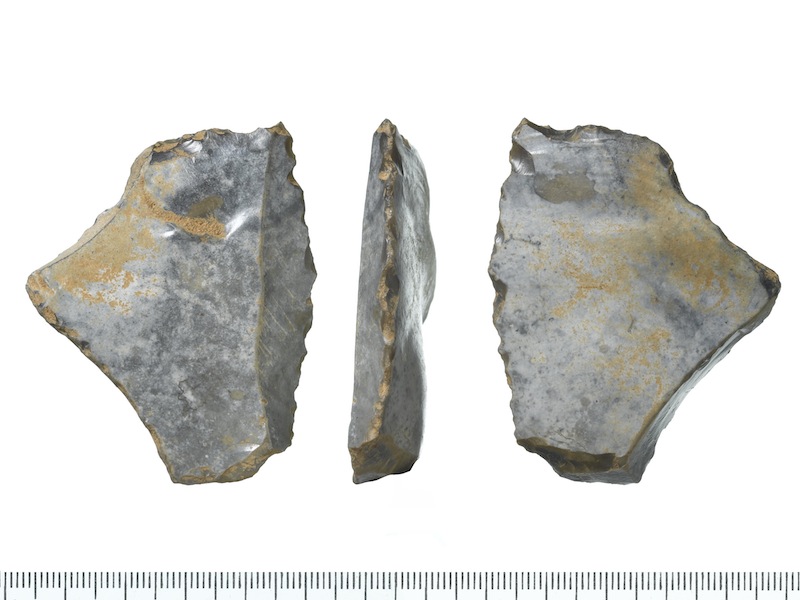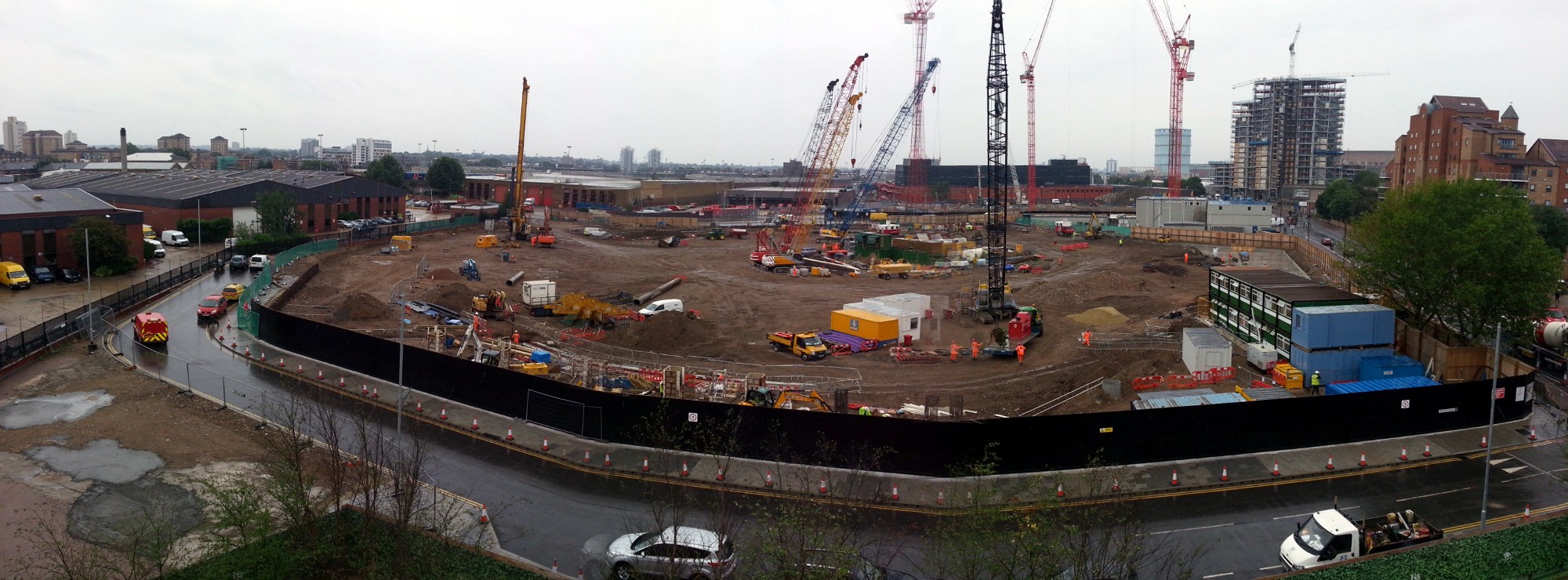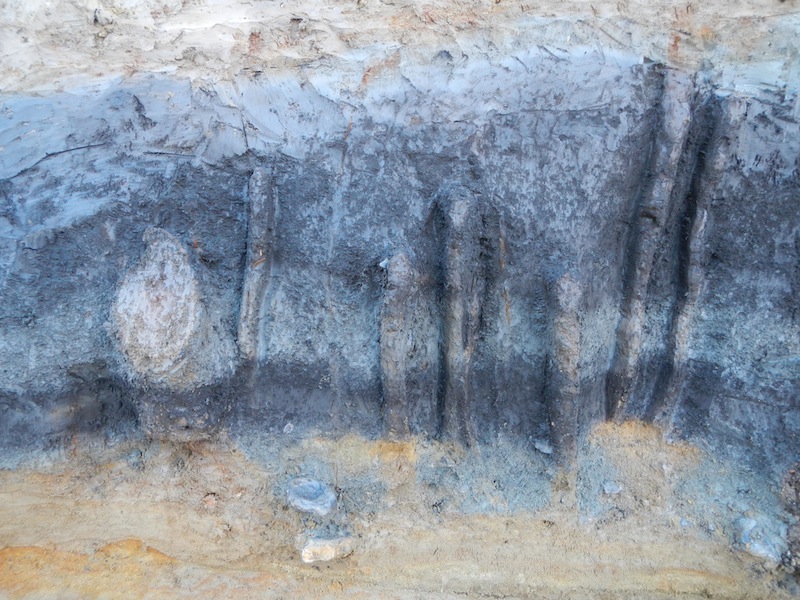Caveman Campsite Unearthed at Construction Site in London

Construction is underway on the south side of the Thames River in London's Battersea neighborhood on a shiny crystalline cube that will house the new U.S. Embassy. But long before the site was set aside for diplomacy, it may have been a caveman campground.
Archaeologists monitoring the building's construction over the last year uncovered traces of London's distant past — Stone Age tools, the charred remains of campfires, animal bones and a possible fish trap.
"Prehistoric sites in London are extremely rare and to have such a vast horizon preserved is quite significant," said Kasia Olchowska, a senior archaeologist at the Museum of London Archaeology, referring to the large surface area preserved. Olchowska patrolled the construction site from last July through April to examine and excavate any archaeological finds. [Photos of London's 'Black Death' Gravesites]
The oldest artifact from the site is perhaps a Paleolithic flint. This sharp-sided rock is likely a flake, or a byproduct from the making of a bigger tool, though it also could have been used as a tool itself, Olchowska said.
Found among water-smoothed gravel, the flint was likely swept into place by a river channel. Researchers haven't pinpointed an exact age for the stone tool, because it's been washed away from its original context. Experts who looked at the flint think it was created no earlier than 500,000 years ago, but more likely crafted sometime between 100,000 and 12,000 years ago, Olchowska said. The researchers are hoping to narrow that time frame with further study.
The rest of the prehistoric surface uncovered at the construction site is up to 11,750 years old, carbon dating showed. At that time, the London area was wetter than it is today, with a network of channels that swirled around sandy islands, Olchowska said. The land was likely too wet for a permanent settlement, but the vast, open space may have been a good spot to set up camp for hunting and fishing expeditions.
Archaeologists uncovered several patches of scorched ground and burned animal bones, which may be evidence of campfires, Olchowska said.
Get the world’s most fascinating discoveries delivered straight to your inbox.
"We think that [the fires] are potentially marking a spot that people were coming back to seasonally," Olchowska told Live Science.
In the southwestern corner of the site, the team also found two rows of disintegrating wooden stakes stretching over an area 39 feet (12 meters) long. These fences might represent an early fish trap used to round up a catch in a basket or net.
The team found other stone tools, too, including a 12,000-year-old plunging blade, which would have been set in bone or wood and used as a tool or weapon, and handheld Neolithic scrapers that would have been used for woodwork or hide-cleaning.
Near the embassy site, archaeologists have previously discovered other prehistoric archaeological remains, including a Bronze Age jetty and a 7,000-year-old timber structure near the Thames. The new discovery gives archaeologists a chance to reconstruct a wider area of prehistoric London, Olchowska said. She is putting together a history of this period in light of her findings at the embassy.
Follow Megan Gannon on Twitter and Google+. Follow us @livescience, Facebook & Google+. Original article on Live Science.





